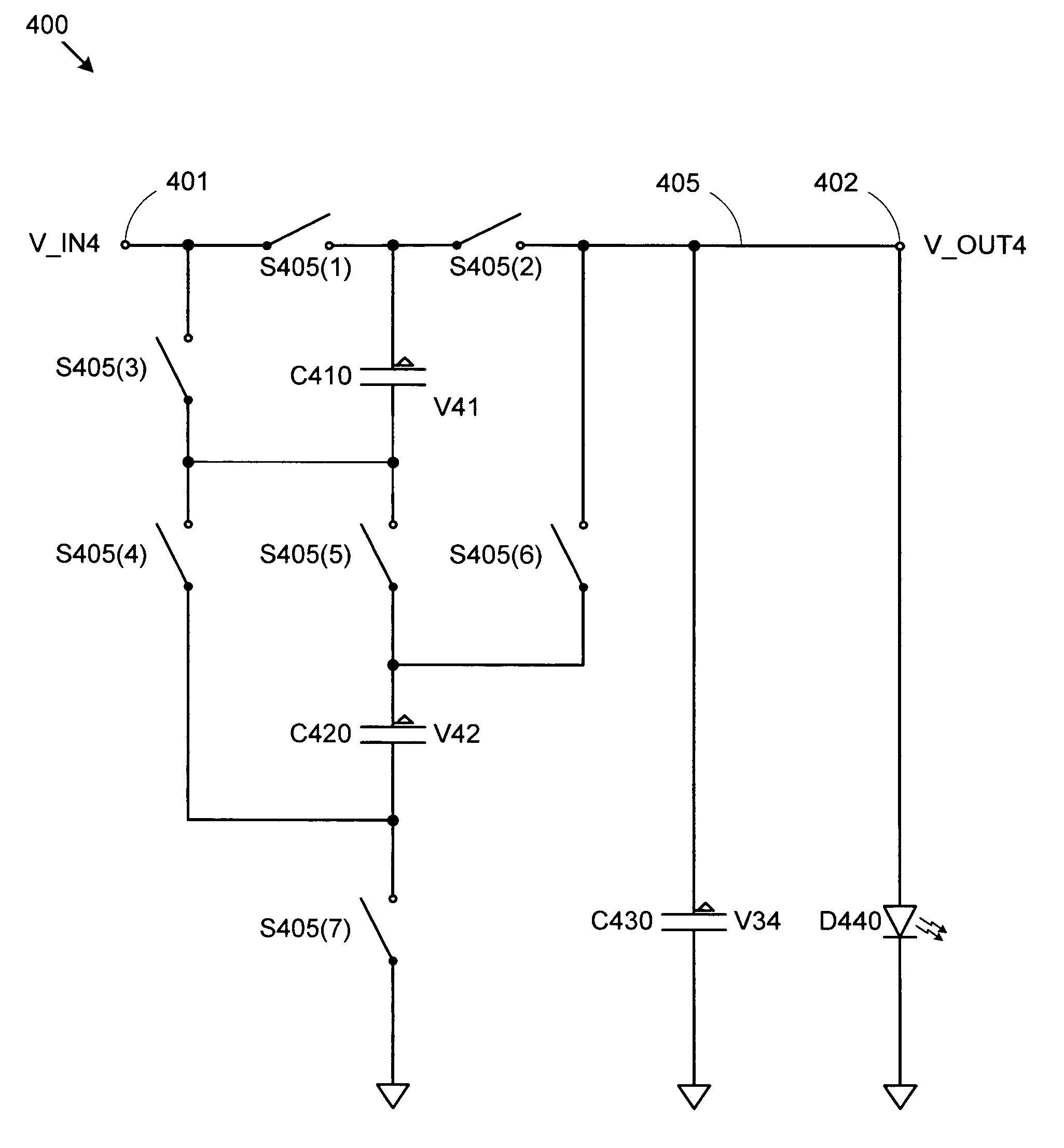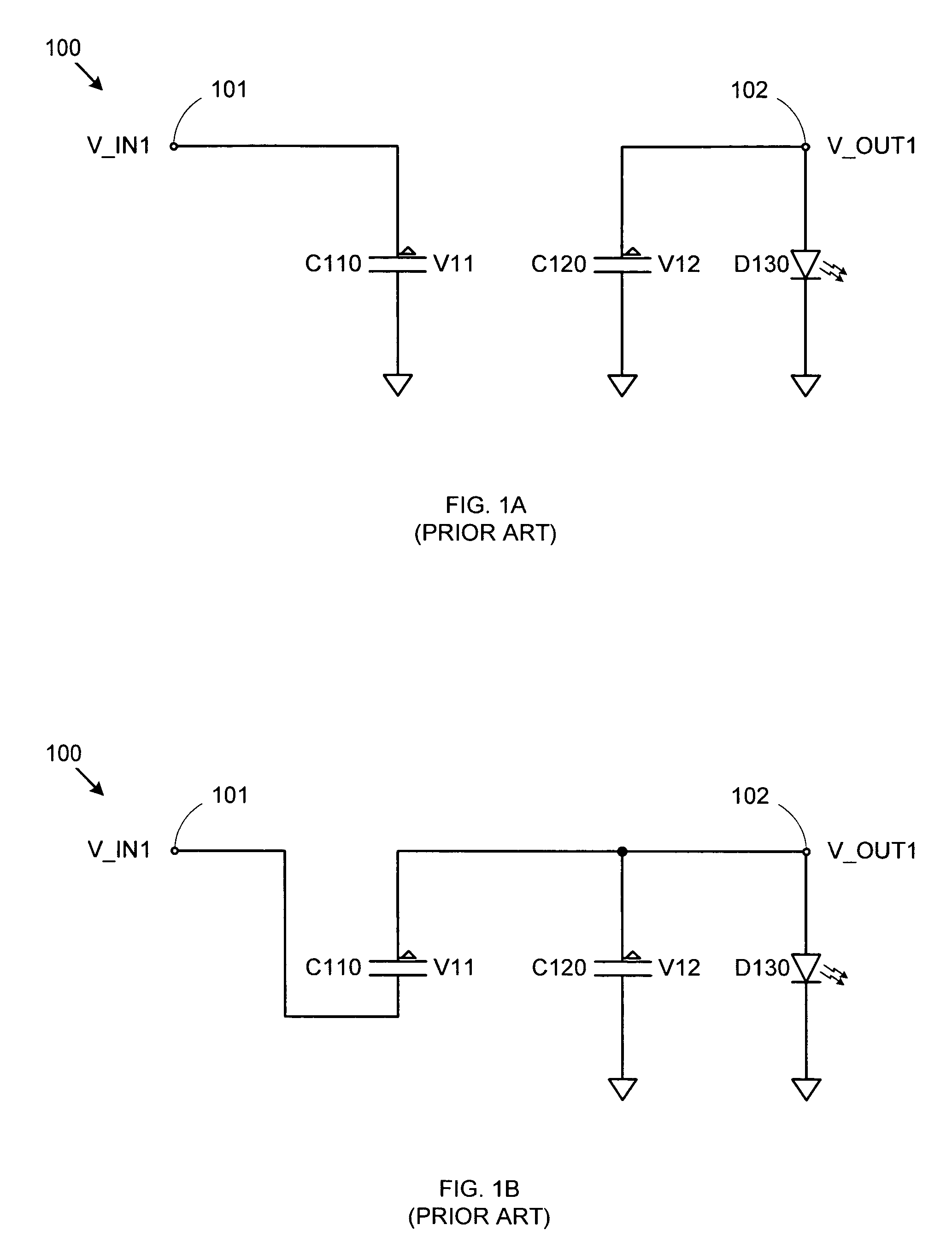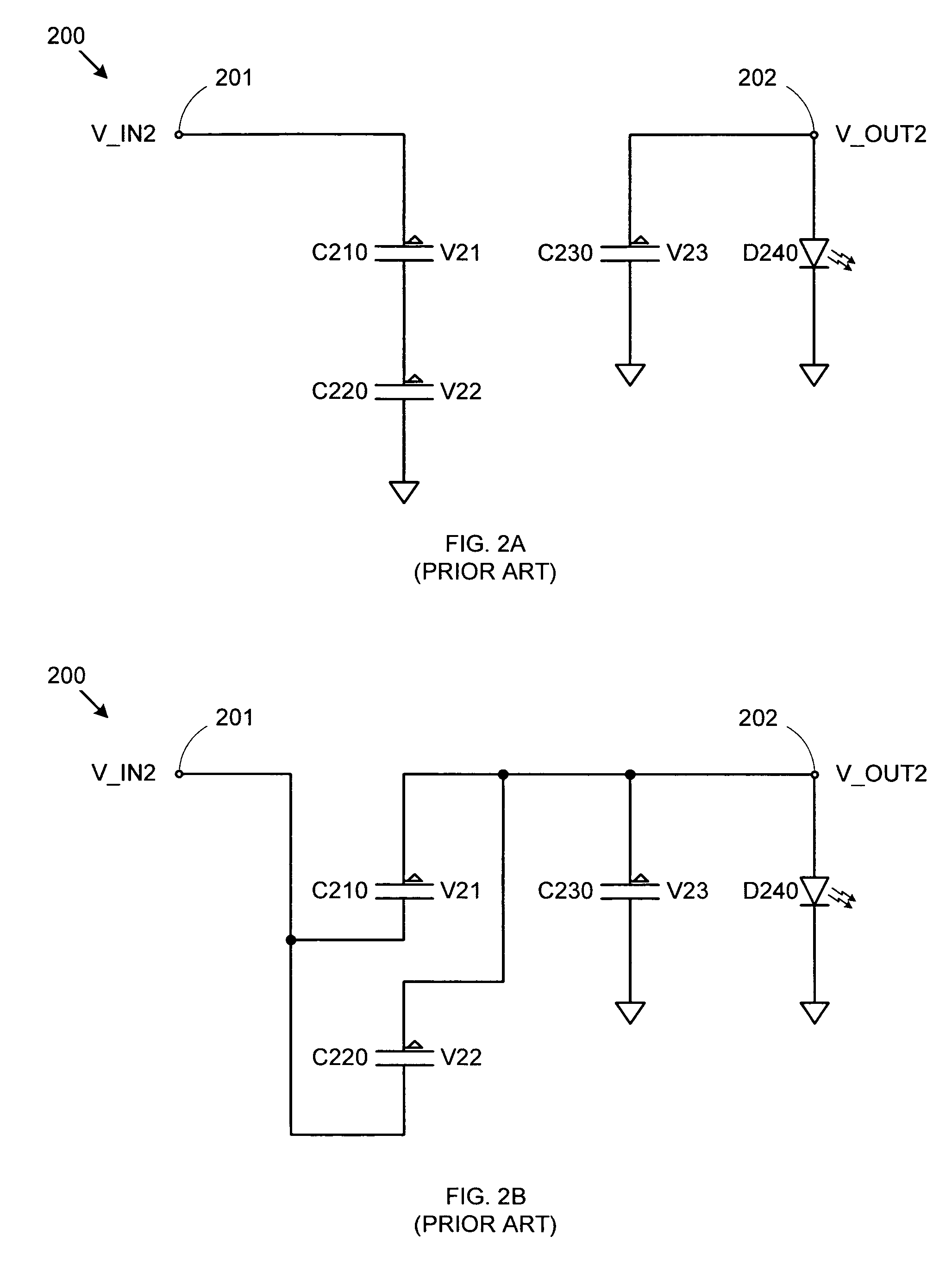LED bias current control using adaptive fractional charge pump
a fractional charge pump and bias current technology, applied in the field of electronic circuits, can solve the problems of reducing the battery life of devices incorporating conventional charge pumps, and wasting power, and achieve the effects of reducing battery life, reducing output voltage, and reducing power consumption
- Summary
- Abstract
- Description
- Claims
- Application Information
AI Technical Summary
Benefits of technology
Problems solved by technology
Method used
Image
Examples
Embodiment Construction
[0036]Conventional charge pumps can generate output voltages that are higher than necessary for many applications. The excess voltage gain must then be attenuated, which results in wasted power (and reduced battery life for devices incorporating conventional charge pumps). By providing a charge pump that applies a 4 / 3× voltage scaling factor, rather than the conventional 3 / 2× or 2× scaling factors, a lower output voltage can be achieved for a given input voltage, which can beneficially improve power efficiency in situations where conventional charge pumps provide excessive voltage multiplication.
[0037]FIGS. 4A, 4B, and 4C show schematic diagrams of an embodiment of a 4 / 3× charge pump 400 for receiving an input voltage V_IN4 and providing an elevated output voltage V_OUT4 to a load D440 (depicted as an LED for exemplary purposes). Charge pump 400 includes an input terminal 401, charging capacitors C410 and C420, a storage (output) capacitor C430, and an output terminal 402. Charge pu...
PUM
 Login to View More
Login to View More Abstract
Description
Claims
Application Information
 Login to View More
Login to View More - R&D
- Intellectual Property
- Life Sciences
- Materials
- Tech Scout
- Unparalleled Data Quality
- Higher Quality Content
- 60% Fewer Hallucinations
Browse by: Latest US Patents, China's latest patents, Technical Efficacy Thesaurus, Application Domain, Technology Topic, Popular Technical Reports.
© 2025 PatSnap. All rights reserved.Legal|Privacy policy|Modern Slavery Act Transparency Statement|Sitemap|About US| Contact US: help@patsnap.com



